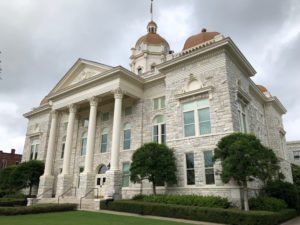Whatever You Think of In re Killian, Patent Owners Deserve Clarity
“The Killian decision is a precedential opinion that stands for the idea that all software claims, not just business method claims, are patent ineligible [and], if left as is…will increase uncertainty in patent eligibility.”
Editor’s Note: Bud Mathis is counsel for Killian.
The average attorney reading the recent opinion penned by Judge Chen and joined by Judges Taranto and Clevenger in In re Killian (Appeal 21-2113) might agree with Judge Chen’s conclusion that, “[w]hile there are close cases under the Alice/Mayo standard, the ’042 application does not present such a close case[.]” To this statement, I, Killian’s counsel, respond that, every time any claim comes close, the Federal Circuit engages in a predictable fiction in which the court: (1) announces that a claim is directed to “a something” described in such a broad and vague manner that “the something” barely resembles the claim at issue, (2) declares that “the something” that barely resembles the claim at issue is “abstract” based on no evidence or analysis, and then (3) declares that the remaining claim limitations lack an inventive concept.
The Remarkable Resurrection of the Mental Steps Doctrine
As with many Article III courts, the Federal Circuit sometimes refuses to let facts get in the way of a good fiction, and even a cursory reading of every Supreme Court decision since Diehr demonstrates that Benson is no longer a general prohibition on software, but a proscription on a claim that simply recites a mathematical algorithm. One amazing fiction in Killian is where Judge Chen, too busy to actually read Supreme Court case law, remarks (page 17): “At bottom, Diehr did not comment on or overrule the mental steps doctrine.”
Wait! Diehr did not even comment on the mental steps doctrine?
This statement would be funny if it weren’t so incredibly WRONG! A cursory word search of Diehr shows that the term “mental step(s)” occurs 15 times in Diehr while “mental operation(s)” occurs four times, “mental processes” occurs twice, and “mentally” occurs once. Further, Diehr spends copious amounts of text characterizing Benson as merely a bar on claims having a mathematical formula and expressly states (citations omitted), inter alia: (1) “It is said that the [Benson] decision precludes a patent for any program servicing a computer. We do not so hold”; (2) “While a mathematical formula, like a law of nature, cannot be the subject of a patent, cf. Gottschalk v. Benson” (emphasis added); “A mathematical formula, as such, is not accorded the protection of our patent laws, Gottschalk v. Benson” (emphasis added); and “In Gottschalk v. Benson, we held that a program for the solution by a digital computer of a mathematical problem was not a patentable process within the meaning of § 101.” (emphasis added). Even Justice Steven’s Dissent saw Diehr as expanding Benson to include software stating that “[t]he broad question whether computer programs should be given patent protection involves policy considerations that this Court is not authorized to address.”
Similar remarks describing Benson as merely a prohibition on math occur in all three of the Bilski, Mayo, and Alice Corp. decisions. While Judge Chen remarks that “Mr. Killian [has not] pointed to any statement in Bilski that undermines a mental process as one of the judicial exceptions,” and “after an independent review, we find nothing in that opinion to that effect,” one wonders exactly what Judge Chen was looking for? The entire reason for the Bilski opinion was to reject the Federal Circuit’s interpretation of Benson. However, does anyone expect the Supreme Court to expressly denounce Benson given an option to quietly harmonize Benson with subsequent case law while using a bit of its own fiction?
If the Federal Circuit is looking for an express statement in Bilski that undermines a mental process as one of the judicial exceptions, the Bilski opinion expressly observes that the Diehr decision “established a limitation on the principles articulated in Benson and Flook” (emphasis added) while also repudiating the Federal Circuit’s machine-or-transformation test.
However, to understand what Bilski represents, one needs to start with a recognition that the claims at issue in Bilski recite a business method untethered from any machine. Lacking a machine or physical transformation, the Federal Circuit en banc rejected the claims under the mental steps doctrine in an opinion written by Chief Judge Michel and joined by eight other judges. This opinion stated, inter alia, “we simply recognized that the Supreme Court has held that mental processes, like fundamental principles, are excluded by § 101’” (emphasis added). Judge Newman criticized the mental steps theory of rejection stating that Bilski’s claimed process “is not a mental process or a law of nature” (emphasis added) but a “process” that was “set out in successive steps, for obtaining and analyzing information and carrying out a series of commercial transactions[.]”
When Bilski reached the Supreme Court, a majority of justices rejected the Federal Circuit’s mental steps theory, and held that the word “process” includes business methods, stating, “Section 101 similarly precludes the broad contention that the term ‘process’ categorically excludes business methods. . . . The Court is unaware of any argument that the ‘ordinary, contemporary, common meaning,’ . . . of ‘method’ excludes business methods.” Thus, the Supreme Court adopted Judge Newman’s interpretation of “process,” downgraded the machine-or-transformation theory of patent eligibility to a mere “clue,” and expressly rejected the mental steps doctrine in favor of plain, ordinary meaning of “process.”
Inventive Concept is Invention
The Federal Circuit has not and will not clarify step two of Alice-Mayo. The only apparent attempt the Federal Circuit made to define “inventive concept” occurred in the en banc CLS Bank v. Alice Corp decision where Judge Lourie stated:
“An ‘inventive concept’ in the § 101 context refers to a genuine human contribution to the claimed subject matter. . . . Accordingly, an ‘inventive concept’ under § 101—in contrast to whatever fundamental concept is also represented in the claim—must be ‘a product of human ingenuity’” (emphasis added).
The immediate problem with the phrase “a genuine human contribution” is that every business method is 100% man-made. The immediate problem with “human ingenuity” is that ingenuity is a synonym for invention. Judge Rader recognized this fact where Judge Rader (joined by Judges Linn, Moore, and O’Malley) issued a lengthy warning on “invention” and how the capricious nature of “invention” wrought chaos to the patent community before the 1952 Patent Act. Judge Rader expressly criticized the above definition of “inventive concept” as “[injecting] an ‘ingenuity’ requirement into the abstract exception inquiry” and surmised, “[i]t is inconceivable to us that the Supreme Court would choose to undo so much of what Congress tried to accomplish in the 1952 Patent Act, and to do so by the use of one phrase in one opinion.”
Thus, at least four Federal Circuit judges have long recognized the dangers of tying “inventive concept” to some vague and undefined notion of human ingenuity recreates the nightmare of “invention.” Judge Rader’s predictions a decade ago on the chaos that would be sown by “inventive concept” have since proved uncannily accurate.
A Call for Amicus
The Killian decision is a precedential opinion that stands for the idea that all software claims, not just business method claims, are patent ineligible. The Killian opinion muddies step one of the Alice-Mayo test, and fails to clarify step two. If left as is, the holding of this case will increase uncertainty in patent eligibility, thus greatly endangering the viability of an enormous number of patents and patent applications.
Further, the Killian decision is an official blessing for the USPTO to make any capricious rejection under the guise of patent eligibility free from the inconveniences of evidence and due process that so plagues the rest of law. Patents are not just property; patents are the life’s blood of small companies and inventors. A granted patent can mean the difference between prosperity and having an entity of greater financial means steal the fruits of one’s labor. The Supreme Court recognized this fact of modern life in Diehr stating, “[t]o a financial giant, the economic value of a patent may not loom large; to the small software products companies upon which the future of the development of quality software depends, the value of the patent in financing a small company may spell the difference between life and death.”
It’s past time the Federal Circuit clarify how each step in Alice-Mayo must be made in a unified manner to create binding law on the lower courts and USPTO. However, this will not happen if the patent community sits idle on its thumbs while the Federal Circuit continues to apply this patent eligibility wrecking ball to your clients’ patent portfolio. I therefore urge you to submit an amicus brief asking the en banc Federal Circuit to revisit this case and provide clarity for the patent community.
Image Source: Deposit Photos
Image ID: 33125311
Author: amanalang






